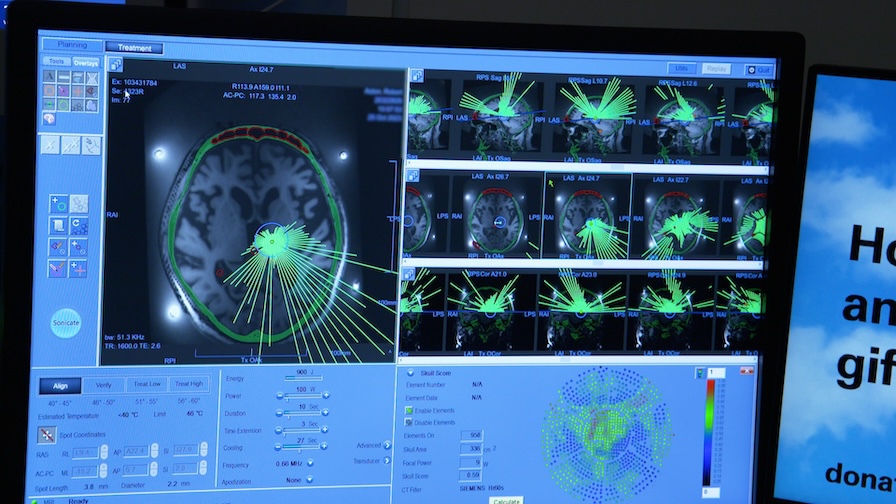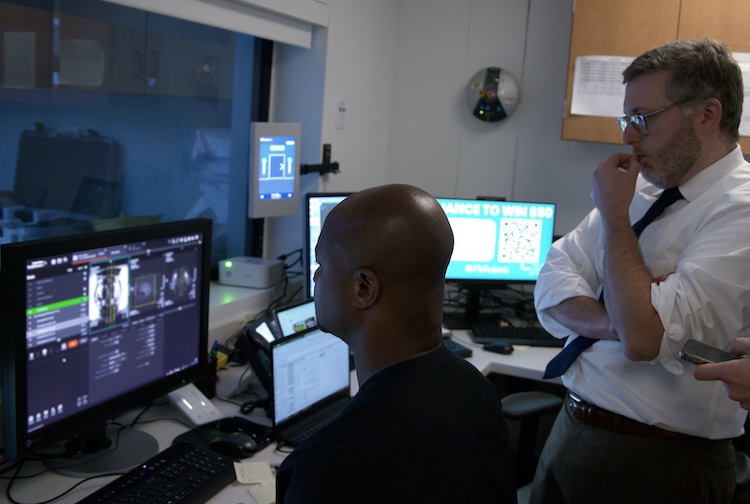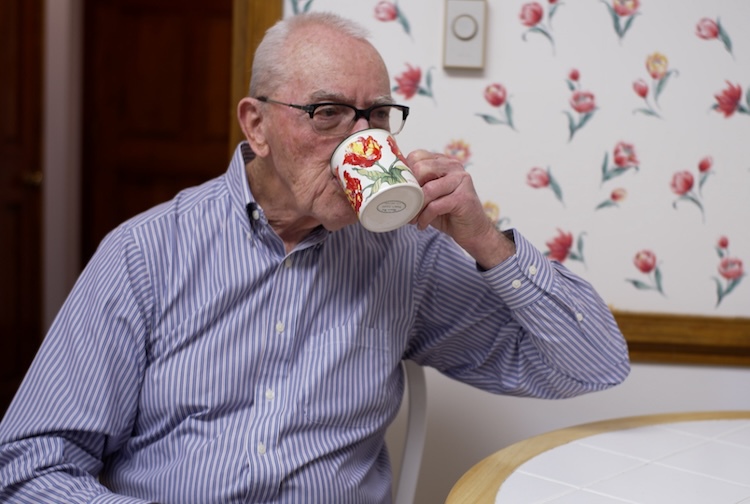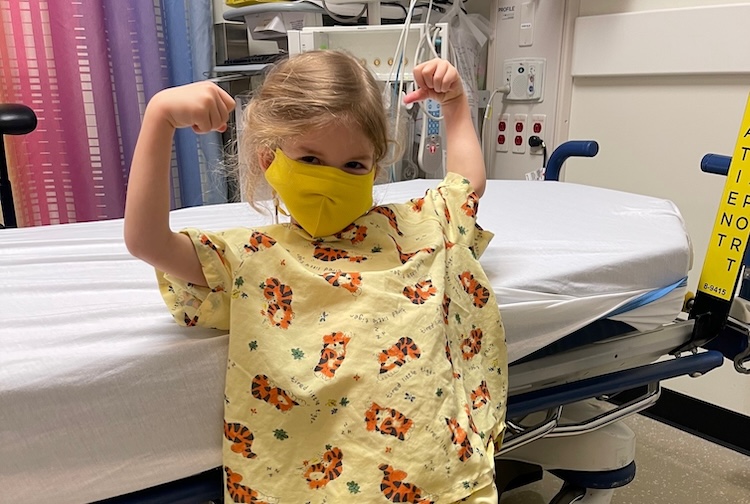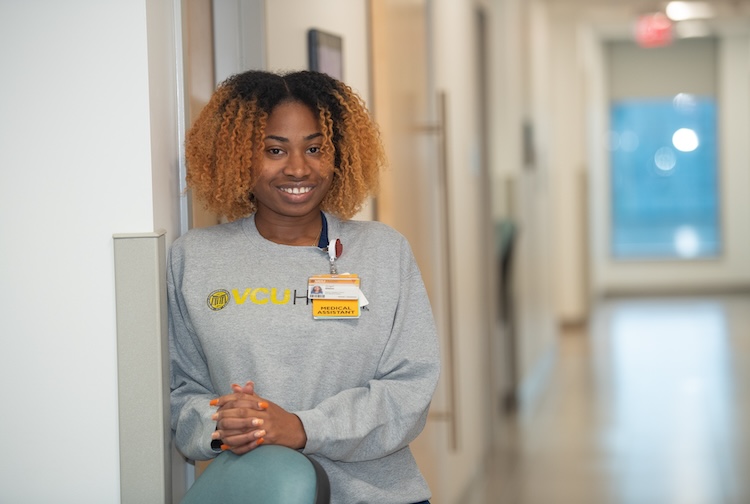
Innovative procedure provides speedy results for patients suffering from tremors
After completing the first focused ultrasound at VCU Health, neurosurgeons see a successful reduction in tremors for a patient living with a progressive nervous system disorder.
January 03, 2024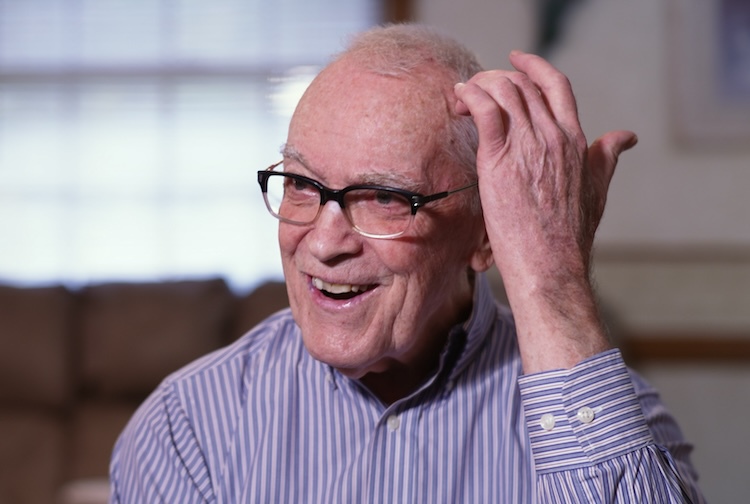 Ross Southers is the first VCU Health patient to have a focused ultrasound procedure to treat essential tremor. (VCU Enterprise Marketing and Communications)
Ross Southers is the first VCU Health patient to have a focused ultrasound procedure to treat essential tremor. (VCU Enterprise Marketing and Communications)
By Sara McCloskey
Like clockwork, you can find Ross Southers at the gym on a treadmill several days a week. The Richmond firefighter didn’t want to take retirement sitting down when he left the department nearly 25 years ago.
“I told [my wife], I'm not going to sit on that recliner. It'll kill you and it will,” Ross recalled. “So, I started going to the gym. I went five days a week, I did all the weights and everything around the house back then.”
But Ross’ routine started to change five years ago when his essential tremors started to get worse. The nervous system disorder causes parts of the body, such as the head, arms, legs or voice, to shake. The disorder can be hereditary, meaning it is passed down through family genes.
Ross was diagnosed during a routine physical exam at Richmond Fire & Emergency Services. At the time, the tremors were so minor he didn’t even know he had them. But within the past five years, the shaking was beginning to drastically affect daily parts of his life.
“I shook so bad that I could hardly function. [My wife] would fix my plate for me, and I would drop it all on my lap. I couldn't go to a restaurant anymore. It was very embarrassing,” he said.
Ross is not alone. People living with essential tremors may start out with a little shaking throughout the day, but as the disease progresses, so does the intensity of the shaking. This can affect activities many take for granted, such as putting on makeup or drinking out of a cup.
To find a better way to manage this condition, Ross was referred to VCU Health. His treatment journey led him to become the first VCU Health patient to receive an innovative surgery, called focused ultrasound, that had immediate results – helping him return to the gym and share meals more comfortably with loved ones.
Leading edge of treating essential tremors
When patients, like Ross, come to VCU Health’s neurosurgery department, team members educate them on a variety of treatment options. They also can expect to have a detailed conversation with their surgeon about what things are important to them during their treatment journey.
“The sad fact is the medications typically do not work that well, and especially as the disease progresses [like essential tremors],” said Kathryn Holloway, M.D., director of the VCU Health’s Deep Brain Stimulation Program, and one of Ross’ surgeons. “If the patient is not responding to the medication, then we consider a surgical procedure.”
Primarily two types of neurosurgeries are recommended for patients with essential tremor, both of which were considered for Ross: deep brain stimulation and focused ultrasound.
Deep brain stimulation (DBS) involves implanting electrode devices in the brain. These electrodes serve as an adjustable, reversible, off switch for the part of the brain that is out of balance. They require surgery, hospitalization, and living with an implant.
Focused ultrasound is similar, in the sense that specific parts of the brain are targeted to create lesions (small “pea-sized” hole). These lesions interfere with the neuropathways responsible for abnormal shaking or tremors. Paul Koch, M.D., a neurosurgeon at VCU Health who was part of Ross’ care team, says this procedure uses about a “thousand individual sources of ultrasound energy” produced in an MRI scanner which “all meet at one point.”
“It’s kind of like if you hold a magnifying glass over a leaf. You can burn a very specific spot by focusing all of those sunrays,” Koch said. “Similarly, none of those individual ultrasound energy beams has enough energy to cause any damage to the skin, bone, and all the other tissues in between the source of that ultrasound wave and the target, but when they all come together at that one focal point, we can knock out that tremor.”
Overall, Koch says focused ultrasound is a “safer and more accurate way” to treat essential tremor than prior lesioning methods.
After being reviewed by his care team, Ross found out he was not a good candidate for DBS due to having fragile blood vessels. However, he was eligible for focused ultrasound.
“I told [Dr. Holloway], “Let's go. I'm ready,”” he said. “I was so confident that we'll be all right. That's why I took it so easy. I was just ready.”
A focused ultrasound procedure pinpoints thousands of ultrasound energy beams to one location on the brain to create a lesion. (VCU Enterprise Marketing and Communications)
A comprehensive and personalized approach to patient care
Patients who come in for a focused ultrasound go home on the same day. The out-patient procedure happens over the course of several hours with a whole team of neurosurgeons and support staff.
“VCU Health was one of the earliest sites in the country to do deep brain stimulation and to really demonstrate that surgical intervention was a really viable option for many of these patients,” Koch said. "Because of the comprehensive team involved, we have been treating these conditions surgically for a very long time.”
Patients lay on a bed that will be loaded into the MRI scanner. A device is put around their head to keep it still during the procedure. The skin is numbed with local anesthesia, so they don’t feel any pain – just a little pressure. Patients are awake the entire time. And as Koch notes, there is “no easy way to take a break” during a focused ultrasound, so comfort is a priority.
“I got back problems, and they took care of me. They padded my back down to where I didn’t feel a thing during the whole procedure,” Ross said.
Every thirty minutes or so, the patient is taken out of the MRI scanner to see if they are feeling side effects, like weakness or tingling in the hand, and to test for any improvements to their tremors. To do this, the patient is asked to try to draw a circle on a piece of paper. The results are almost immediate.
“The first time, I was coming off the pad and couldn’t even make half a circle,” Ross said. “After another thirty minutes, they handed it to me and everybody in there applauded because I made a perfect little circle.”
Being able to see a treatment work so quickly doesn’t happen often in hospitals, making focused ultrasound so different than other types of surgeries and procedures.
“For DBS, there's the procedure, there's the recovery, there's turning it on and there's titrating it,” Koch said. “What makes focused ultrasound sort of more instantaneously gratifying is how immediately we see the effects and how little trouble the patient has had to go through to get to that point.”
It takes a whole team to care for the patient, including neurosurgeons, neurologists, nurses, speech and physical therapists, and MRI technicians.
“Our patients are reaping the benefit of this team approach that makes VCU Health so unique,” Holloway said.
While the neurosurgery team has performed surgeries similar to this procedure for about two decades, Ross was the first patient to receive a focused ultrasound. Holloway, who has been with VCU Health for 40 years and is a world-renowned expert in stereotactic (or DBS) neurosurgery, says what makes VCU Health and the neurosurgery team stand out is their careful and comprehensive approach.
“Some hospitals have patients being put through as fast as they can with this procedure. And we think that's a very wrong approach. We want the patient to understand all of the options that they have,” Holloway said. “We have a great depth of experience and I like to think that we are really dedicated to making this the best, safest procedure possible for the patient.”
Neurosurgeon Paul Koch, M.D., reviews images taken of Ross' brain during the focused ultrasound. He is part of the large team of VCU Health experts providing holistic care to Ross throughout the procedure. (VCU Enterprise Marketing and Communications)
“You’ve given me my life back”
After going through with the focused ultrasound, Ross comfortably walked down the hallway to see Holloway.
“I hugged her and I told her, “You’ve given me my life back.” And in a sense [Dr. Holloway] did. It’s amazing, totally amazing,” he said.
Patients are checked by a physical therapist after this procedure due to potential balance issues. Ross immediately passed with flying colors.
For Ross, tremors are no longer holding him back from his passions. With a speedy recovery, he is back at the gym three days a week, hitting the treadmill for an hour each day. The physical routine is important for Ross, since he doesn’t want to take retirement sitting down.
“I refuse to stop, but I’m a nut at it. Been doing it for 25 years," Ross said. “I won’t quit till I can’t move.”
The tremors Ross experienced prevented him from doing everyday tasks, such as drinking out of a cup. After the focused ultrasound, Ross is able to enjoy coffee with his wife at home more comfortably. (VCU Enterprise Marketing and Communications)

